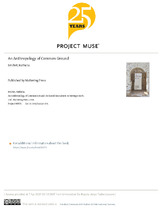Mostrar el registro sencillo del documento
Altering heritage through mimesis
| dc.creator | Brichet, Nathalia | |
| dc.date.accessioned | 2021-04-07T19:44:01Z | |
| dc.date.available | 2021-04-07T19:44:01Z | |
| dc.date.created | 2018 | |
| dc.identifier.other | https://directory.doabooks.org/handle/20.500.12854/64373 | |
| dc.identifier.uri | http://hdl.handle.net/20.500.12010/18540 | |
| dc.description.abstract | In Paris in 1875, seventeen countries, including Denmark, acceded to the Treaty of the Metre, thereby taking the first steps to ‘ensure world-wide unification of physical measurements’, so that exactly the same measurements applied in Paris and Copenhagen.1 More than a century later, the offspring of the Treaty, a foldable wooden ruler, was one of the most treasured tools used by a Danish architect working on the reconstruction of Frederiksgave. With the ruler in his hand the architect figured as a professional who measured, admired, touched and rebuilt the Frederiksgave buildings. | spa |
| dc.format.extent | 41 páginas | spa |
| dc.format.mimetype | application/pdf | spa |
| dc.language.iso | eng | spa |
| dc.publisher | Mattering Press | spa |
| dc.subject | Anthropology | spa |
| dc.title | Altering heritage through mimesis | spa |
| dc.subject.lemb | Patrimonio | spa |
| dc.subject.lemb | Patrimonio cultural | spa |
| dc.subject.lemb | Antropología | spa |
| dc.rights.accessrights | info:eu-repo/semantics/openAccess | spa |
| dc.rights.local | Abierto (Texto Completo) | spa |
| dc.identifier.doi | 10.1353/book.81375 | |
| dc.type.coar | http://purl.org/coar/resource_type/c_3248 | spa |
| dc.rights.creativecommons | https://creativecommons.org/licenses/by-nc-sa/4.0/ |

